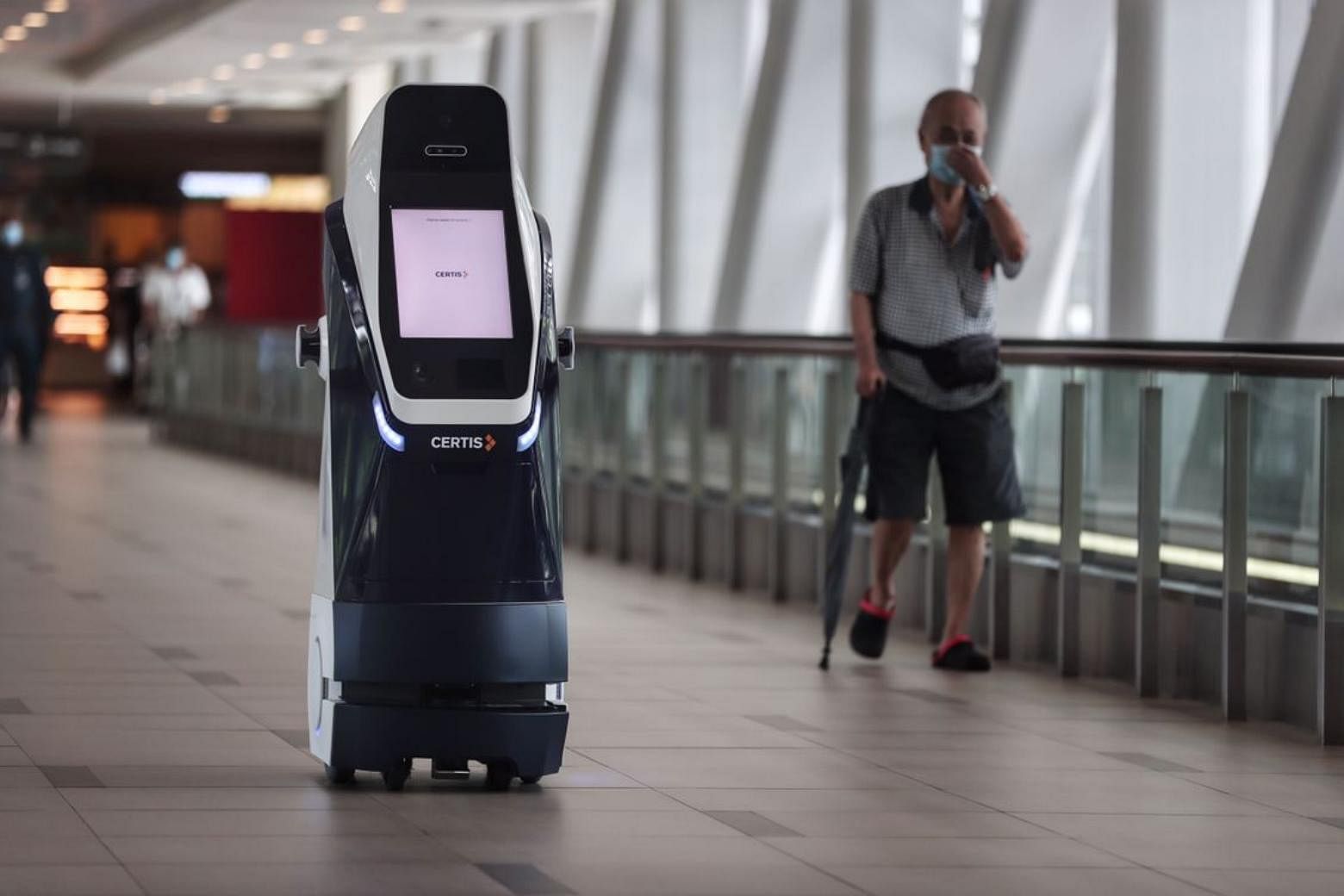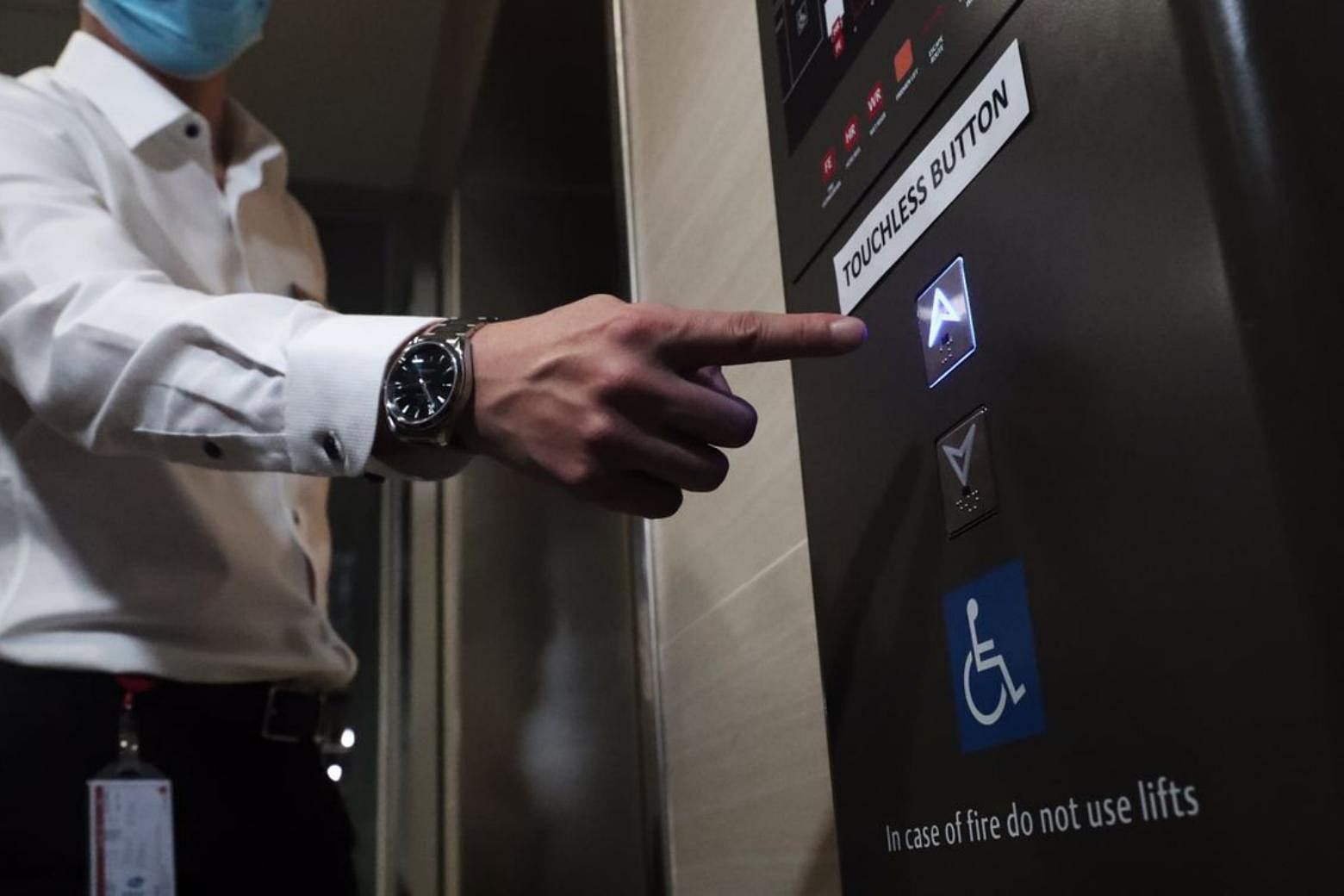Robots to check temperature and deny entry to visitors without masks at NUHS hospitals
Sign up now: Get ST's newsletters delivered to your inbox
Follow topic:
SINGAPORE - As you walk through the doors of Ng Teng Fong General Hospital next month, a robot will scan your SafeEntry check-in and record your temperature.
The security and concierge robot will also detect visitors and patients who are not wearing masks or following social distancing rules, and deny these non-compliant visitors entry.
The robot will be deployed at Ng Teng Fong General Hospital from October, and it will also be in action at Alexandra Hospital from November.
Around the same time, the National University Hospital (NUH) will have a roving security robot that can identify suspicious activities such as crowding and people lurking in restricted areas, and alert security officers in the control room.
The three hospitals are part of the public healthcare cluster under the National University Health System (NUHS).
In a statement on Thursday (Sept 24), NUHS said robots, drones, and touch-free technologies will become the new normal.
The shift to tech-based solutions comes as the hospitals seek to minimise labour-intensive operations and move to a more efficient, safer and productive way to manage its facilities.
This will not only save time but slice costs by at least 50 per cent in each hospital, NUHS said.
"We are not using technology to replace our colleagues at the NUHS Group Facility Management Team," stressed Mr Ng Kian Swan, the chief operating officer of NUHS.
"Instead, the technologies will be used to support them in their work and give them the opportunity to reskill and upskill."
Some of the staff are learning on the job as they work with Internet of Things sensors, for instance, and others have been sent for courses to learn how to fly drones, added Mr Ng.

With the bots at the frontline patrolling and observing, security officers can focus on value-adding duties such as using video analytics to review footage that the robots send in, responding to emergencies and spreading safety awareness.
As for drones, they are already being used to scan the buildings' exterior, to look out for hazards and areas that need maintenance work, such as cracks and water leakages.
NUHS is the first organisation within the local healthcare scene to use drones to inspect hospitals.
Equipped with high-resolution cameras, the drones can capture videos and images of hard-to-reach areas such as roof gutters, and detect leaf blockages at drains and water ponding at rooftops, a potential breeding ground for Aedes mosquitoes.
The drones transmit live footage of areas that need repair work to the operator on the ground.

With the drones, a job that took workers days to inspect manually can now be done in a few hours. Mr Ng said this allows the hospitals to complete four rounds of inspections a year, and keep the buildings in tip-top condition.
Previously, gondolas - manned and moved by workers - were used to inspect the building's facades. Workers were also exposed to danger when scaling ladders and by walking on ledges and weak roofs.
To prevent the transmission of bacteria and viruses, all four hospitals will install touch-free buttons in lifts that patients and visitors frequently use, by next year.

To pilot this, some lifts at Ng Teng Fong General Hospital's Tower B have been installed with touch-free buttons.
The hospitals have also recently adopted IoT sensors, as flood and fire preventive measures.
These sensors are used to monitor water and wastewater levels at certain locations in and around the hospitals, while thermal sensors track humidity to prevent damage from the overheating of computers, for example.
"We are raising the capabilities of our people and partners to bring about operational efficiencies with zero downtime, cost effectiveness, energy optimisation and sustainability," said Mr Ng. .

